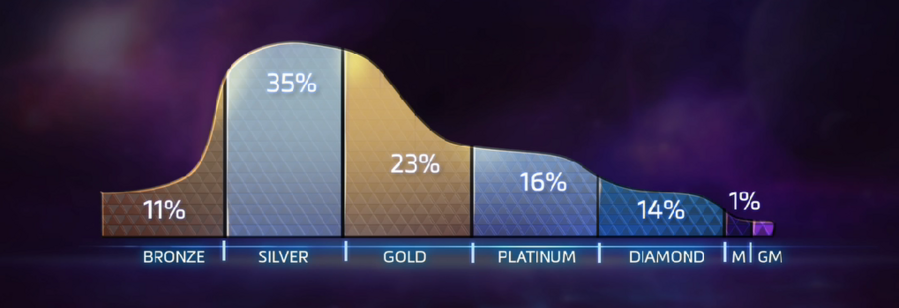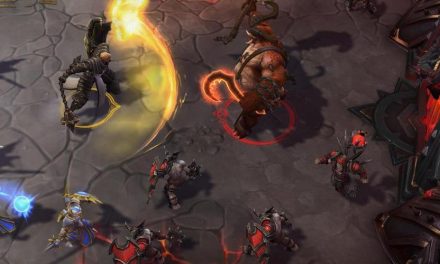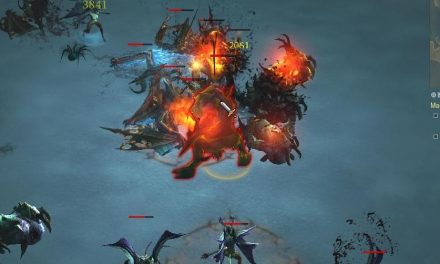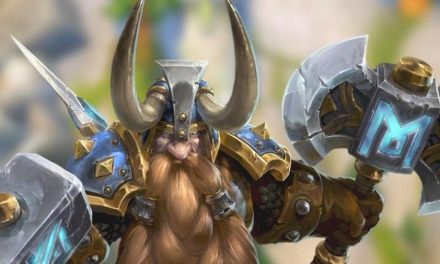In many competitive online games, players are matched up according to presumed skill and familiarity; it’s generally no fun for either side to have a team composed of semi-professional gamers vie against opponents who have just started to try online play for the first time. There are many different ways in which game developers have worked to create a relatively even playing field in their matches, and Heroes of the Storm is no different – there are two specific types of player ranking that help determine the types and quality of opponents someone will face.
Objectively, the ranking system is working well if everyone has a roughly 50% win rate – that means their exact skill and ability to synergize with others has been well-calculated, along with those of their opponents, resulting in very fair matches where only luck or exceptional moments (either good or poor) determine the outcome. No ranking system is perfect however, and there are far too many variables to take into consideration at the scale of an entire playerbase, but they try their best.
League Rank
Heroes of the Storm uses a tiered ranking system for each competitive “season” – usually lasting about ten weeks – wherein which the first several games played each season are used to help calibrate where on the scale each player should begin, with game wins and losses thereafter affecting their visible rank.
As shown in this article’s header, major groupings include Bronze, Silver, Gold, Platinum, Diamond, and then Master-level players. Excepting Masters-level play, which uses its own nomenclature with which I am unfamiliar, each of the lower brackets is further sub-divided into ranks 5 (lowest) through 1 (highest). Players can choose to display their league rank for any game mode (such as quick match or brawl), but it is always displayed when playing league games, to give friends and foes alike an idea of your relative skill level. A Silver 3 player can normally be trusted to be a better player than a Bronze 1, which may change the team dynamic when it comes to who they listen to for direction.
A player begins a new season and starts to play their initial placement matches. The game attempts to calculate how good or effective of a player they are, largely based on the MMR metric described below, which then gets adjusted by the wins and losses of those matches, resulting in a final starting rank, say Silver 2. In theory this person will play most of their upcoming games against other players in the mid-Silver to low-Gold brackets, because that should result in about a 50% win rate, the aim of the system.
Once the placement matches are completed, the only way for a ranking to change is through wins and losses. As one may expect winning matches tends to increase the ranking, based on the relative difficulty of the opponents, while losses reduce ranking. If a player wins (or loses) enough games in a row, they will be prompted that the result of their next game will determine whether or not they are promoted to a higher rank (Silver 2 to Silver 1, for example), or demoted (Silver 5 to Bronze 1).
If someone who is normally a Platinum-level player has a terrible head cold and plays atrociously during the placement matches, they may actually find themselves placing in the low Gold levels, after which time they must crawl and claw their way back up the ranks win after win. Granted, because the player is usually more skilled than the Gold-level opponents they’re facing, their team has a better than average chance of winning, and so the progression will be easier.
Alternatively, if a player has a solid outing during the placement matches and winds up in Silver 1, but then goes on a losing streak in actual league play, they could find themselves demoted through Silver and even into the Bronze tier. Once the placement matches are complete, a player’s individual skill has very little bearing on how many points a given match is worth – ultimately all that matters is a win or loss.
As in the above two examples, winning or losing streaks can result in a player being artificially elevated or depressed in the rankings, though generally not into a different bracket (a very lucky Silver player who has good teammates may be carried for a while, but is unlikely to break into the Gold rank). Ultimately, if a player regularly competes during the league season, their final standing should be an accurate mix of their individual skill along with their win/loss record from that season. So as to not discourage people from achieving a high level and then not playing anymore, at the end of each season players are rewarded based on the highest rank they received, even if they later slip.
Match-Making Ranking (MMR)
The other way Heroes of the Storm calculates what composes a “fair” match, and also how it determines at what difficulty to start league placement matches at, is called the MMR. Through a formula only known to Blizzard developers themselves, each individual player’s skills are ranked, aggregated, and given a final tally. This total goes up with good play against higher-ranked opponents, and goes down with poor play against lower-ranking opponents. Again, their goal is to encourage a 50% win rate, as suggested by their algorithms.
MMR is tracked separately in all game modes; the organization of Quick Match play is different than that of Team League, and Brawls are another animal altogether. While someone who is a good player in one area is likely to be a good player in another, sometimes this correlation does not hold up, or there just isn’t enough data (because for instance someone plays Team League almost exclusively; there’s no easy way to guess how well they’d perform in other match types).
Because MMR is an accounting of a player’s individual skill based upon the existing ranking of their opponents, and not directly reflective of a win/loss record, some players have adopted the strategy of having “smurf” accounts that are played infrequently so the game algorithms are unable to obtain an accurate measure of skill. This tends to result in the players facing easier opponents, since often those without ranking data tend to be newer or lower-skilled players. Their games will be easier, they will be more likely to win, and they won’t need to exert as much effort to secure a victory. Some players also use these alternate accounts to try new characters, so poor play or unfamiliarity wouldn’t reflect on their primary account’s MMR.
There is no known way to discover a player’s MMR, though many third-party algorithms and estimations have been made, which tend to at least track reasonably with where people find themselves in the leaderboards.
One additional note about MMR – in game modes like Team League where there is a strict draft process and one player is designated team captain, the choice is (largely) based on individual MMR, not league ranking. For a very good player who has had a long losing streak, this can result in the odd situation of the player with the lowest apparent rank (e.g. a Silver 4 on a team of Silver 1s) being the one chosen to call the shots.
Header image taken from Season 1 league results from Blizzard’s official forums.















